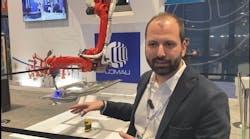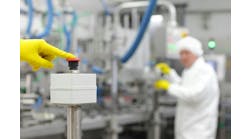Control Design Editor in Chief Mike Bacidore in his feature, "A new level of energy efficiency for machine builders, system integrators," details how machine builders and system integrators have found ways to bring energy savings to customers. As part of the feature we go a step further in one area in which machine monitoring can yield energy savings─compressors.
Air compressors cost $500/year/hp in energy, and other types of compressors are similar. Typical industrial compressors are 500+ hp. Compressors are much less efficient than pumps, and their efficiency can suffer if the wrong kind of sensors are used.
“A chemicals manufacturer in South America was having difficulty meeting plant demand for compressed air,” explains Joel Lemke, marketing manager at Emerson Process Management. “Demand was increasing, with no corresponding increase in plant production. Shortages in air could lead to failure of pneumatic equipment, so the manufacturer added capacity to its compressed air system. Electrical costs for generating compressed air were increasing rapidly.”
After consulting with representatives from Emerson, it was found that 10 orifice plates were installed in the compressed air system, measuring the output from nine compressors, as well as total air production. “Orifice plates are widely used in plant utility systems for monitoring, control and internal billing, but they have a permanent pressure loss that can be higher than other meters,” explains Lemke. “Pressure loss is an especially important consideration in compressed air systems since the compressors must consume more electricity to overcome it.”
Emerson recommended replacing the orifice plates with Rosemount 3051SFA Annubar flowmeters, which provide high accuracy with almost no permanent pressure loss.
“After replacement, the electric power consumption meters on the compressed air system showed an average decrease of 10% in power per cubic meter of air delivered, with increased pressure at remote parts of the system,” says Lemke. “The associated annual energy savings was $750,000.”




